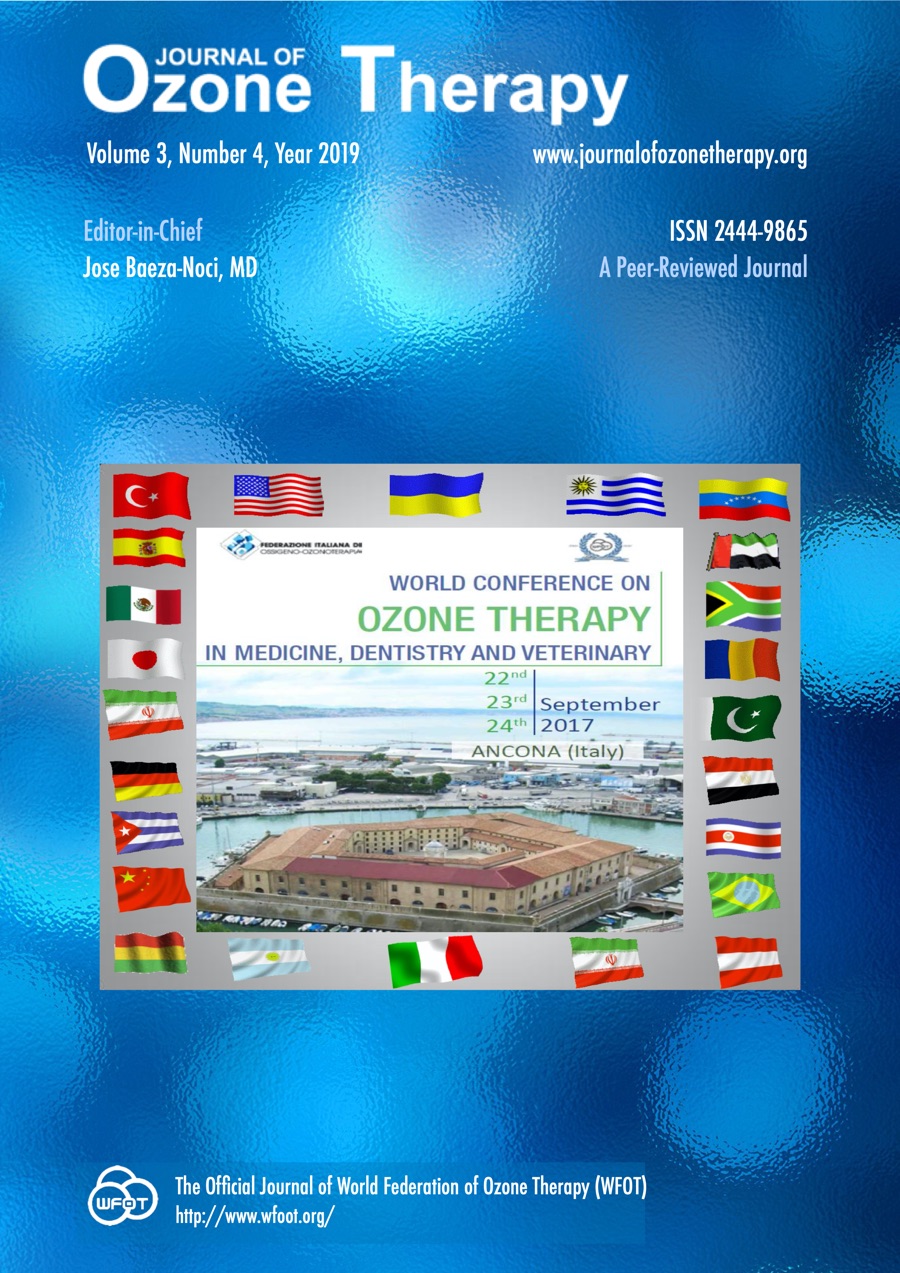Our experience in Costa Rica on treatment of disc herniation [abstract]
DOI :
https://doi.org/10.7203/jo3t.3.4.2019.15401Mots-clés :
ozone injections, disc herniation, spinal pain. Résumé
Résumé
PURPOSE: To inform on the characteristics, results and epidemiological data on the treatment of Disc Herniation in Costa Rica.
PATIENTS AND METHODS: We evaluated the handling of 1240 patients, with Disc Herniation at Cervical 147 cases (11.85%), Thoracic 1 case (0.09%) and Lumbar 1092 cases (88.06%) levels. They were all treated with Oxygen-Ozone therapy, in an ambulatory form, with a protocol of treatment, initially consistent of three to four sessions of paravertebral intramuscular infiltration (O3: 20 mcgr/mL), followed by a session of “Discolysis” (O3: 38-40ug/mL) technique under sedation and fluoroscopy, followed by four to five complementary sessions of paravertebral intramuscular infiltration of 02-03, in a lapse from three to six weeks.
RESULTS: In our casuistry we treated 669 men (54%) and 571women (46%) and deducted that there is an evident predominance in the incidence of lumbar disc hernias with 1092 cases, followed by the cervical disc hernias with 147cases, with a negligible incidence of Thoracic Hernias (1 case 0.09%).
DISCUSSION AND CONCLUSION: The results achieved with the O2-O3 Therapy are highly satisfactory; especially with the cervical (84.2%), and we believe that it is due to a less incidence of associated pathologies and a higher conscience of the problem by the patients.
 Téléchargements
Téléchargements
Téléchargements
Publiée
Comment citer
-
Résumé546
-
PDF 255
Numéro
Rubrique
Licence
Journal of Ozone Therapy applies the Creative Commons Attribution-NonCommercial 4.0 International License (CC BY NC 4.0) license to works we publish.
Under this license, authors retain ownership of the copyright for their content, but allow anyone to download, reuse, reprint, modify, distribute and/or copy the content as long as the original authors and source are cited. No permission is required from the authors or the publishers.
You may not use the material for commercial purposes.
Appropriate attribution can be provided by simply citing the original article, provide a link to the license, and indicate if changes were made.
You may do so in any reasonable manner, but not in any way that suggests the licensor endorses you or your use.




